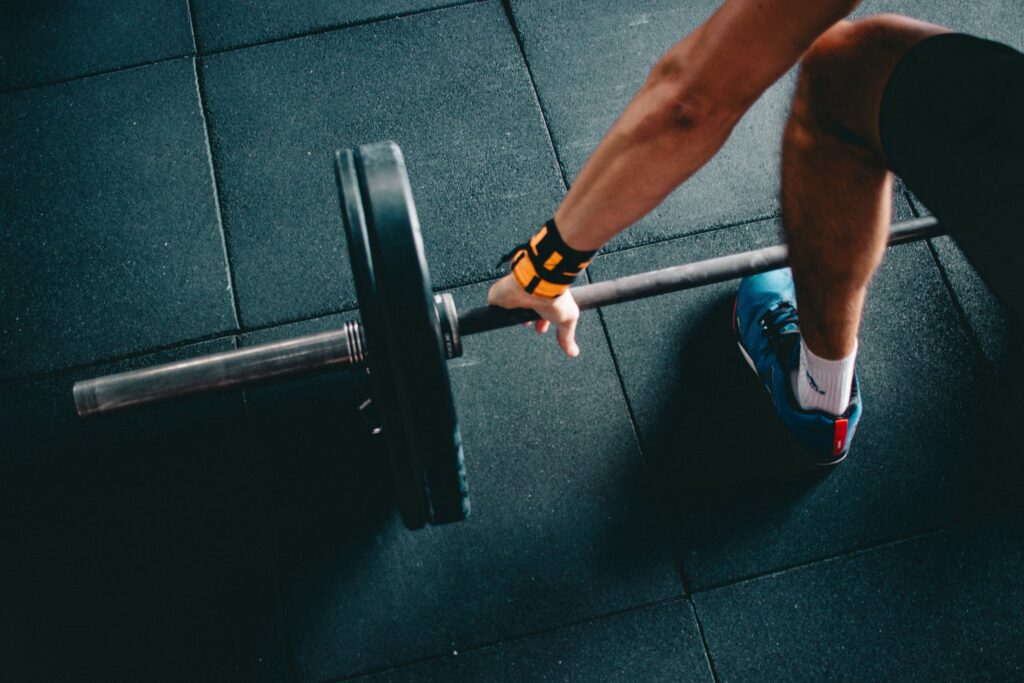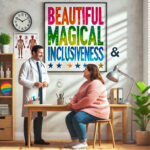The dark side of fitness culture

The dark side of fitness culture
Many fitness narratives on social media feature people purporting to be role models by seeking to inspire us to live a healthier life. They do this by presenting what they consider a desired physique, through sharing images and footage on their platforms. They focus on mirror selfies, muscle growth, defined and toned bodies as well as before and after photos (Rajan, 2018).
As someone who struggled for more than 16 years to reclaim their life from an eating disorder, I want to reach people who may be experiencing challenges during recovery and are being impacted by fitness influencers sharing content on social media. Such content may be triggering for vulnerable people who fall into the trap of obsessive exercise. I felt this fitness focus delayed my own recovery, especially when I had left inpatient treatment, and found myself in a society obsessed with image and fitness.
Becoming fixated on my body was dangerous as I had already experienced exercise obsessions throughout my eating disorder. Hashtags such as, “Strong not skinny,” and, “Fitspiration,” were red flags. Initially, social media accounts run by fitness influencers led me to feel inspired, but I soon realised this was just another way for me to mask the deep underlying issues of my eating disorder. Sitting at home scrolling through image after image on social media, reinforced my belief that to be accepted in this world, I would need to obtain an ideal “fitness physique”. Such thoughts had further detrimental effects on my mental health.
Some fitness professionals and influencers on social media platforms encourage a more inclusive approach, appreciating exercise for the joys of intuitive movement rather than exercise to burn calories or to achieve a desired physique. For example, Alice Living, a prominent fitness trainer and influencer, opts for a health at every size approach. Alice had challenges with her body and relationship with food in her early years. Now, she teaches people that life isn’t always happier or healthier spent striving towards the “thin ideal” that looks like a slender, feminine physique with a small waist and minimal body fat, or the “athletic ideal” with visible toning, and a muscular appearance. Alice aims to inspire people to challenge their body as the incredible machine it is, which has nothing to do with weight loss or changing body shape. She is a realist, sharing days where she may go to the gym or for a run in nature, but also sharing those days where she is happy to lay on the sofa watching movies with a tub of ice cream without feeling guilty.
However, others on social media send out messages under the guise of diet culture and disordered eating. Although their “fitspiration” content may have initially been an innocent attempt to inspire and motivate people to lead a healthier lifesyle, its unintended detrimental effect on both mental and physical health is becoming more apparent (Griffiths et al., 2018). Displaying images of one’s body for public scrutiny frequently leads to an increased pressure to feel the need to maintain or obtain this desired body for both the influencer sharing the photos as well as those viewing them.
The pursuit to maintain this fit, slender and toned body becomes a means of feeling validated, accepted and can be perceived as an expression of power (Rajan., 2018). Unfortunately, research suggests this obsession with obtaining a certain physique contributes to detrimental effects on body image. Additionally, it increases the risk of developing disordered eating, compulsive exercise obsessions and eating disorders (Bell et al., 2016; Robinson et al., 2017).
Enough is enough
Many fitness influencers on social media platforms claim to promote health and vitality (Griffiths et al., 2018). But is this really what they are selling? Many influencers, who offer fitness plans, diet plans and endless pictures that are photoshopped and “perfected,” set unrealistic standards about what we should strive for with our physical physique. Frequently, posts are captioned to promote falling in love with yourself, self-compassion, limiting comparison, loving your body and body acceptance. However, I wonder if these influencers are speaking their truth. Many influencers, both male and female, enter this space with low self-worth, low self esteem and the way to validate their worth is by getting a dopamine hit from seeing thousands of likes and followers across their platforms. Essentially, their body is their way of seeking validation. Male fitness influencers may place greater emphasis on increasing their muscularity, whereas female influencers may seek a toned, slender yet defined physique (Grogan., 2016).
With social media becoming an increasingly important communication medium, among the most common platforms are Facebook, Instagram, Snapchat, Tik Tok and YouTube. Users of such platforms need to protect their mental health. However, we know that people tend to follow accounts that confirm their bias. So, the person who is vulnerable to an eating disorder or body dissatisfaction, is likely to follow accounts focusing on food and exercise. Upon searching for some common hashtags or key words associated with these accounts, I notice that many of these accounts are promoting a toxic and unhealthy space for vulnerable people. Too many of these accounts are not inspiring women and girls to get into sport; instead, the focus is on image, body and external validation. Pictures are angled to emphasise toned muscles and shapely bums, while posing in body hugging active wear revealing air brushed bare skin. Claiming to be exercising with a pristine face complete with flawless makeup, the photoshopped result is not empowering anyone. Profile after profile we see the same things, yet these influencers build huge followings and profits from promoting this unhealthy culture. For instance, in recent years, Instagram has seen more than 14.3 million images labelled with #fitspiration or #fitspo.
Mental health experts have expressed concern, stating these social media accounts are doing nothing to promote a positive healthy relationship with food, exercise or our bodies (Dignard & Jarry., 2021; Griffiths et al., 2018; Holland & Tiggemann., 2017). Influencers themselves have been identified as frequently suffering from disordered eating, body images issues and unintentionally promoting their behaviours and issues onto vulnerable others (Dignard, N.A. and Jarry, J.L., 2021. Given the wealth of research in this space of the dangers associated with these social media accounts, how can these images be deemed empowering? I am worried for future generations, with more young children becoming obsessed with their bodies and each year, more children being diagnosed with eating disorders. Something needs to change.
During my recovery from anorexia, I too became obsessed with my body image. I started sharing gym selfies and became hooked on the “strong not skinny” trend. Looking back, this behaviour was so unhealthy. I believed I would find happiness in achieving the “perfect” physique. What truly happened was that I became so obsessed I lost enjoyment in everything. All I ever thought about was exercise, food or my body. What a sad existence. Yet this is such a common route for many people who enter into recovery from an eating disorder. Many take a deep dive into the fitness world; yet this only serves as a blanket to cover up the deep underlying issues around their eating disorder that they have not addressed.
Our underlying issues need to be addressed too
Eating disorders are notoriously difficult to treat and at their core, are about low self-worth, a lack of self-belief and acceptance. In recovery, many people only deal with the outer shell (the physical) but the underlying issues need to be addressed too. Essentially, food, exercise and body sculpting become another way to hold onto a sense of control and suppress other emotions that don’t want to be felt. This is a way for someone to seek the validation of worth through image. Such behaviour is often accepted in society as being normal, or worse still, dedicated, motivated. The result is a society fuelled by diet culture.
Many influencers claim their behaviours promote a healthy lifestyle when in fact, these behaviours are not about health at all. I appreciate that many influencers are unaware of the dangers of their social media posts. As such, I believe we need greater education and awareness of the risks associated when there is an overwhelming emphasis on body image. There needs to be formal education for those working in the fitness industry on healthy ways to promote exercise on social media without increasing a person’s risk of developing the psychiatric illness with the highest mortality rate of any mental illness, an eating disorder. This could be implemented into courses for fitness training qualifications as well as through continuing professional development. While this may be a challenge and an ambitious goal, I believe with more people pushing for change, we can make the fitness world a healthier place.
Changes are happening in sporting organisations for those working with athletes. There is more education and awareness of the risks of eating disorders and body images issues within the sporting environment. I believe such changes can filter into other fitness environments. Furthermore, we need more voices to promote health at every size and teach people they are more than a body. In fact, our bodies are the least interesting thing about us.
Explore accounts that support recovery
As someone who became so obsessed with exercise and healthy eating that I developed orthorexia, I know how hard recovery is in a society fuelled by diet culture. Social media platforms promoting #fitspiration or “strong not skinny” were definitely not supportive in my recovery. However, these accounts are likely to continue to exist. So, what can we do? I now choose to avoid any interaction with such accounts, because I don’t want to engage with people who need to validate their worth through their appearance. I encourage you to do this too if an account makes you feel you are not good enough, or makes you feel anxious and encourages you to change your body shape/physique. Rather, follow accounts that support your recovery, health at every size (for example, @BodyImageWithBri; Tally Rye, @Chr1styHarrison, Isa Robinson, Victoria Spence, Alice Living), or even different types of accounts such as nature, poems, spiritual or cute, cuddly animals.
Happiness will never be reached by achieving a body shape or size. Our bodies are not ornaments to be admired or judged. They are incredible vehicles. I hope this article may help you if you are struggling right now with the fitness world on social media. I also hope that people in the fitspiration world will recognise their behaviours and be inspired to seek help.
In a dream world, there would be no focus on body ideals. For now, it is important to focus on accounts that inspire and encourage us to move towards a life full of freedom from our bodies, so we can focus on what truly matters. Equally, let’s continue to speak up, educate people from a young age about their body being an incredible machine, and encourage people to concentrate on their worth depending on who they are, which has nothing to do with their body or how they look.
References
Bell, H.S., Donovan, C.L. and Ramme, R., 2016. Is athletic really ideal? An examination of the mediating role of body dissatisfaction in predicting disordered eating and compulsive exercise. Eating behaviors, 21, pp.24-29.
Dignard, N.A. and Jarry, J.L., 2021. The “Little Red Riding Hood effect:” Fitspiration is just as bad as thinspiration for women’s body satisfaction. Body Image, 36, pp.201-213.
Griffiths, S., Castle, D., Cunningham, M., Murray, S.B., Bastian, B. and Barlow, F.K., 2018. How does exposure to thinspiration and fitspiration relate to symptom severity among individuals with eating disorders? Evaluation of a proposed model. Body Image, 27, pp.187-195.
Grogan, S., 2016. Body image: Understanding body dissatisfaction in men, women and children. Taylor & Francis.
Rajan, B., 2018. Fitness selfie and anorexia: A study of ‘fitness’ selfies of women on Instagram and its contribution to anorexia nervosa. Punctum. International Journal of Semiotics, 4(2), pp.66-89.
Robinson, L., Prichard, I., Nikolaidis, A., Drummond, C., Drummond, M. and Tiggemann, M., 2017. Idealised media images: The effect of fitspiration imagery on body satisfaction and exercise behaviour. Body image, 22, pp.65-71.





